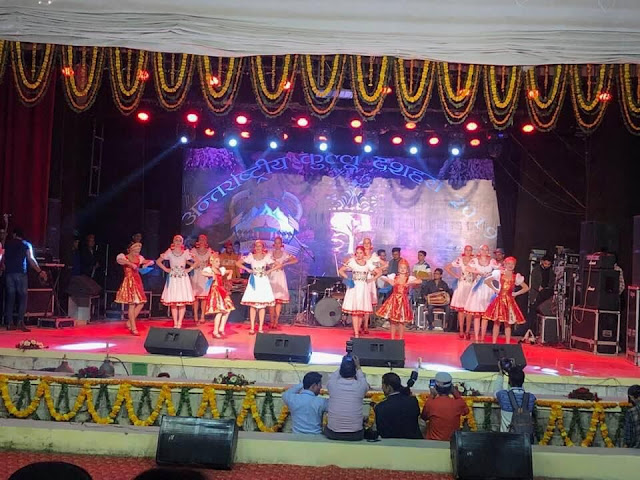Of all the Dussehra celebrations in our country one of the most unique is the Dussehra at Kullu in Himachal – as it starts on the day when the celebrations end in the entire nation – YES– on the Vijayadashmi day. It is then celebrated as a seven-day ‘International Festival’ (since 1972) with great community bonding and fervor.
I have seen Kullu Dussehra many times since 2000. Initial attractions were the stalls of various household items, not easily available in Himachal and the evening cultural programs. Gradually I realised it’s a rich amalgamation of history, religion, culture and customs and have tried to understand how it started and what makes it so unique.
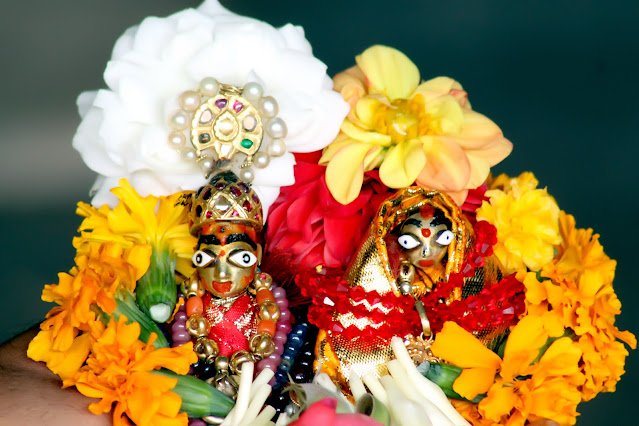
Many legends are related to Kullu Dussehra – the story of Raja Jagat Singh and of Jamdagini rishi and ‘Tarah Kardu ki Sauh’ (a basket made of Bamboo and eighteen deities) – are the accepted ones. I shall, however, narrate the popular folklore here.
According to it the Dussehra festivities started way back in 1651 AD during the rule of Raja Jagat Singh who was cursed by a Brahmin Durga Dutt who self-immolating himself because of the excesses of the Raja and his soldiers. Consequently, the Raja fell ill and started hallucinating worms in his food and blood in his water. Nothing helped the Raja; he was finally cured of his illness/hallucinations due to the blessings of the idols of ‘Raghunathji and Sita mata’ which were stolen from Ayodhaya for him.
The Raja was so overwhelmed by the divine power of lord Raghunathji that he abdicated his throne for the Lord and became his ‘chharibardar’ (regent). He then invited all the local Devi and Devtas on the Vijayadashmi day to pay their obeisance to the new Lord of Kullu, accept his suzerainty and celebrate together. It is said that the Raja perhaps wanted this celebration to seek penance for his sins as well. This was the start of Dussehra in Kullu.
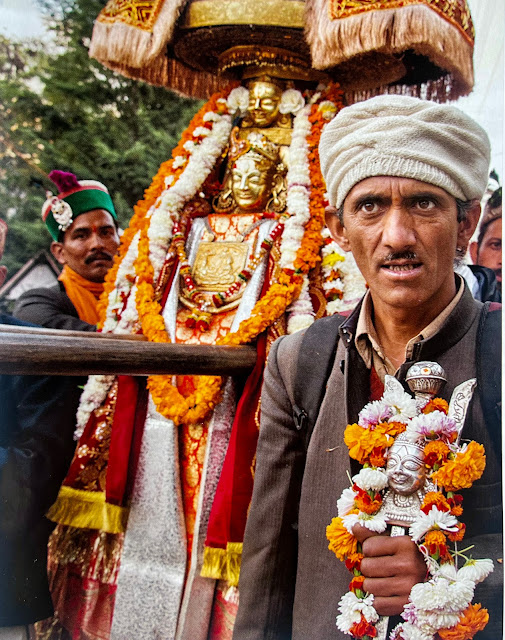
This was an important move on the part of Raja as Himachal has a strong culture of ‘Local Deities’ which are mainly the form of Shiva and Shakti. Local deities are obeyed by all and are present in the daily lives of their devotees – guiding, commanding and counselling them. The fragrance associated with Sita and Rama, Radha and Krishna is almost absent in Himachal.
Hence, the acceptance of Raghunathji by local deities was important and he became the main deity of Kullu valley and Dussehra festival with Himachali influence in his Puja (worship) and Shringaar (decorations). The Dussehra in Kullu is unique as no ‘Ramlila’ is enacted here neither the effigies of Ravaan or his brothers are burnt like is done in the Gangetic plains and none other Gods come for the celebrations. In Kullu – it is more the coming together of ‘God and Man’ with most local Devis and Devtas of the valley gathering in the Dhalpur ground of Kullu to celebrate and enhance divinity and bonhomie amongst all. It is also an opportunity to conduct business, promote economy and tourism, and showcase cultural heritage.
I will divide Kullu Dussehra into three main attractions as according to one’s interest and passion. The Rath-Yatra; the Devi and Devta’s; the Fair and Cultural programs.
The Rath – Yatra
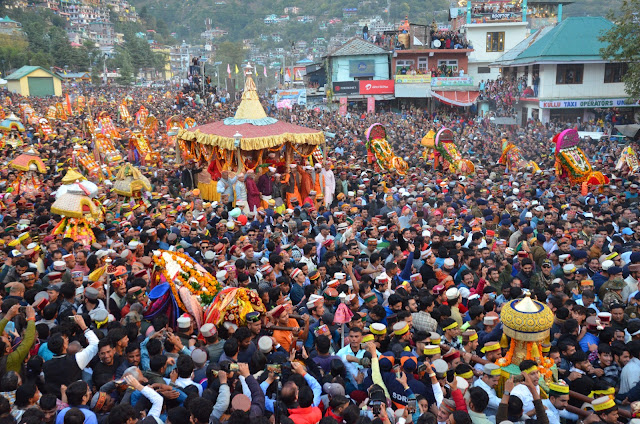
The Dussehra magic dawns from the time the entire valley starts resounding with the sound of ‘Bajantaris’ (the players of traditional musical instruments) days in advance who accompany the Devatas and their ‘Haar’ (the kardars -workers, the Pujari-Priests, the Gur– the oracle, Bajantris and the Nashandars –the keepers of artifacts – collectively known as Haar-garland of the Devta) descending to participate in Ragunathji’s ‘Rath-Yatra’.
All roads leading to Kullu city are full of processions of beautifully adorned wooden palanquins of Devtas and they being worshipped by the locals. They first go to Raghunathji’s temple and then some join the rath-yatra and some directly to their designated sitting areas in the Mela ground.
The beautifully adorned Mela ground started getting filled up with umpteen numbers of devotees and tourists. The music created by the beating dhols, Ranasingha, Thonkru was added to the atmosphere along with the continuous chanting of ‘Jai Sri Ram’. The entire atmosphere was getting charged.

I had planned to sit in the stall and watch, but could not stop myself from going near the Devtas for the feel. To be amidst the vibrations was enigmatic.
Raghunathji and Sita Mata are adorned with flowers and are brought to the ‘Upper Maidan’ from their temple by their priests and Raja of Kullu and placed on the most extravagant ‘Rath’ which is tied by the ‘hemp ropes’. Each person present wait for the moment the Rath shall be pulled by hundreds (considered to be extremely auspicious) and the yatra shall commence. Many other Devi and Devtas also join in and take their historically designated positions. They greet each other and also do ‘Khela’ (some rituals ). The yatra commences after Devi Hadimba – one of the most important deity – permits it.

As the time for pulling the ropes neared, I could feel the vibrations – thousands of eyes were only on the main Rath. As if nothing was more important in life at that moment. We all watched in awe when the ropes were pulled and the ‘Rath’ of Raghunathji and other Devtas slowly started marching towards the lower Mela ground. It lasted a few minutes only but was indeed a divine and mesmerizing sight to be experienced at least once in life. What is also commendable was the discipline shown by the devotees – present in lakhs.
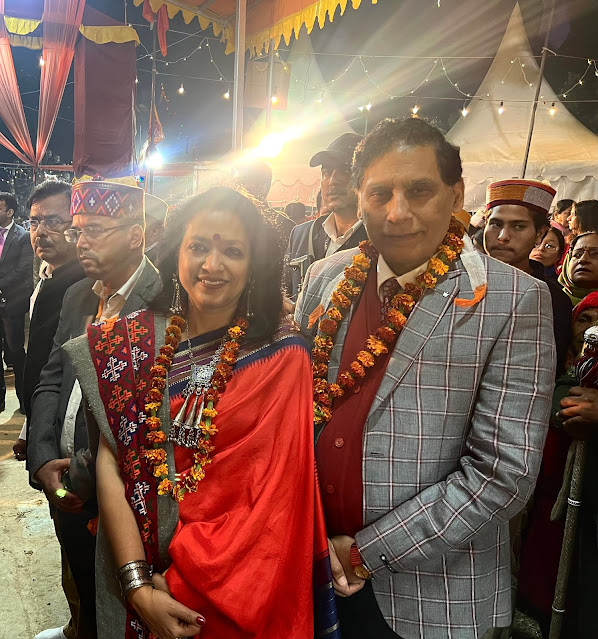
The Devi and The Devta’s of Kullu Valley –
For me the most fascinating experience of Kullu Dussehra was to getting to know about the ‘Devta culture’ and seek blessings from all 300 plus Devtas sitting in their pre-designated place allocated in the Mela ground for ages. The feeling of being able to do so is unexplainable.
What also intrigues me is that the Devtas of Himachal (including Kullu) are living and moving entities. Most of the temples do not have fixed statutes; they have Raths with Devtas placed on them. The Devtas mounted on Raths come in and out of their temples and also go into people’s homes at their will. They follow a set pattern of rituals which are quite complex to be explained here, but what I understood in brief was that each Devta has designated families to look after them and set rules for their management.

The hierarchy amongst the Devtas is clearly defined. Raghunath ji and his regent are at the top and the rest are as according to the faith shown by their devotees for them in numbers and income. Interestingly only the Devtas of Kullu valley participate in Dussehra and not of neighbouring districts.
For the Mela, the Devtas are facilitated by the administration by giving them pre-decided ‘Nazrana’ (offerings) and Travel and Bhog (food) grants. The Devtas receive devotees in the Mela and visit their homes on invitation. They form an important part of the Mela – the way they meet and greet, the way their instruments are played and the way they are worshipped in their stalls is something to be seen and revered.

The Mela and the Cultural Show
It is not only the show of the local Devtas but also of the local, National, and International artists. The cultural programs at ‘Rang Manch’ (open auditorium) showcase the culture of Himachal, India and guest countries. This year 15 countries participated in the festival and the novelty was their ‘Cultural Parade’ on the second day along with the local artists. The Mela is now trying to showcase both – the age-old customs and the Videshi culture.
The Mela was and still is the meeting ground for the entire valley and the neighboring districts. It is the biggest market for utensils, crockery, woolens, bed sheets, quilts and shoes. I was actually quite tempted to shop but couldn’t because of the paucity of time. The people of the valley, however, still shop for their entire year from this Mela. For seven days most people also enjoy the local and other goodies- especially Siddu and Kachoris – on offer in the food court – another attraction.
On the last day of the Mela some animals are sacrificed and a huge bonfire is lit to signify the burning of Lanka – a custom probably added much later. The idol of Lord Raghunathji is brought back to its temple in Sultanpuri through a grand procession. The rest of the Devtas also go back to their places of origin. The end of Dusshera also is the time of the closing of many temples for winter and re-opening around Shivratri.
For me Kullu Dussehra was meaningful and full of divinity, but what fascinated me the most was how the entire populace of the valley immerses itself into the divine atmosphere of Dussehra festivities for seven days as if the gates of heaven have been opened and the Gods have descended to the valley. The people living in the city get to connect with their villages through their Devtas. I could see traditional attires and Kulluvi Topi everywhere – even on young heads. It was endearing and reassuring that all – especially the younger generation – are connected to its roots and traditions and cherish them in totality.
JAI RAGHUNATH JI KI
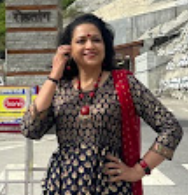
Dr. Anurita Saxena is an Associate Professor of History and teaches in the Government College for Girls in Shimla. She is a post – doctorate from JNU with specialisation in Environmental History. She hails from UP but has made Himachal her home since past 32 years. She has keen interest in all aspects of Himachali crafts, cuisine and culture. An enthusiast for life, she loves to trek, play Golf and Bridge, sing and dance and be a Vipassna practitioner. She conducts sessions on Communication Skills and personal grooming and is a Casual compère with Himachal Doordarshan. She can be contacted at [email protected]


